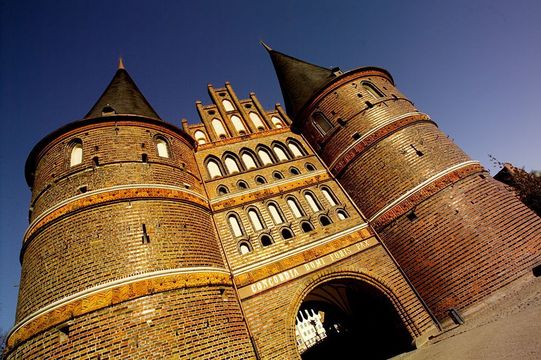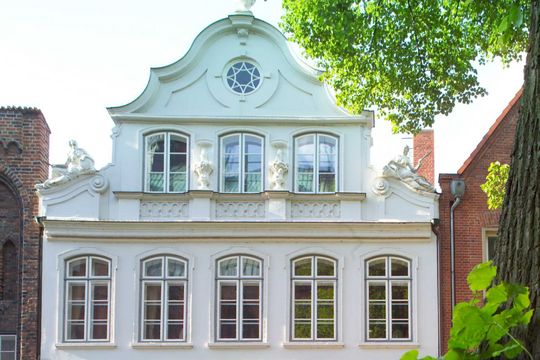Facts
216,530 Inhabitants ¹
11,216 Students ²
3 Higher education institutions ²
WELCOME TO LÜBECK
Lübeck used to be an important trading centre in the Middle Ages. Practically every ship that sailed the Baltic Sea put to shore at the Lübeck harbour to sell its wares. Traders from all over Germany came to purchase their goods, including furs and pelts. Those times are long gone, but even today, you can still sense the glory of Lübeck’s past. The historic centre is humming with bustling commerce which served as the foundation of Lübeck’s economic might in the Middle Ages. In fact, this part of town is a UNESCO World Heritage Site and is situated on an island in the middle of the Trave River.
The Holstentor is one of Lübeck’s most well-known landmarks. Long ago, anyone who wanted to enter the city was obliged to pass through this gate. Once you’ve passed it yourself, you can find your own way through the small alleyways and side streets of historic Lübeck. Perhaps they’ll lead you to the Old City Hall? In the courtyard of the city hall, you’ll discover the old marketplace. Green grocers and merchants still sell their products here on several days of the week. At the city harbour, you can marvel at the historic warehouses, called “Kontore”, once owned by the town’s wealthy merchants.
If you like music, then you can enjoy regular organ concerts at one of the three major churches in town. These and several other churches have provided Lübeck with its nickname, the “City of the Seven Towers”, which refers to the seven church steeples. If you view the city from outside the city walls, you’ll be able to see all seven of them at one time.
But you won’t only find ancient history in Lübeck. If you’re interested in German literature, you can pay a visit to the Buddenbrook House. It’s a model of the house in which the Buddenbrook family lived, the fate of which was the subject of Thomas Mann’s world-famous novel “Buddenbrooks”. The Nobel laureate was a native of Lübeck, whose works and life are featured in a museum in Lübeck. Günter Grass, another famous German author, lived close to Lübeck as well.
Tip
For the merchants small, covered alleyways were constructed so they could transport their furs from the warehouses to the marketplace. Nowadays, you can wander through these same alleyways and see where they take you!
Lübeck is also famous for its marzipan. This sweet almond treat is produced by several companies, some of which are over 200 years old. You can buy Lübeck marzipan in many shops in town. It comes in all shapes and sizes – fruits, musical instruments, flowers – and they’re all made of marzipan!
Interview
ETSUKO FROM JAPAN
LIVING IN LÜBECK
Lübeck is a small, cosy city. You can walk or take your bike most anywhere in town. If that’s too strenuous for you, you can also take buses everywhere. Despite the narrow streets, you never feel closed in. If you ever get the urge to go to some major parties and clubs, you can travel to in under an hour – the second largest city in Germany.
Most of the small and large restaurants and bars are located in Lübeck’s old part of town. The historic district is ideal for meeting up with friends from your higher education institution. In the summer time, you can sit at a pub along the Trave and kick back with a cool beverage.
If you’re a music enthusiast, Lübeck has a lot to offer. Concerts of classical music are held regularly at the large churches in town, but also at the concert hall. The Brahms Festival takes place in late April or early May every year, and in the summer, there’s the Schleswig-Holstein Music Festival.
If you need to cool off after a sweltering summer day, we recommend taking a trip to the beach! The village of Travemünde, located directly at the Baltic Sea, actually belongs to the city of Lübeck. You can get there very simply by taking the bus or the train. The beach is almost two kilometres long. Naturally, you can swim in the Baltic, or you can relax in one of those wicker beach chairs. While lying there, you’ll see large ships set anchor at the harbour in Travemünde. The ferries can take you to Scandinavia in just one day, or to one of the Baltic states! In the evening, you can take a relaxing walk along the beach, dine on fresh fish at one of the many restaurants or treat yourself to an ice-cream.
#SwabianCulture #BaroqueCity #CastlesAndParks



